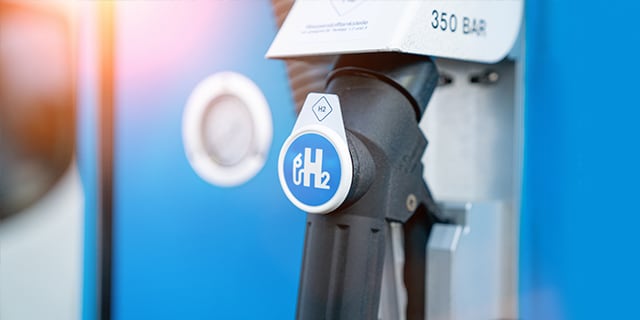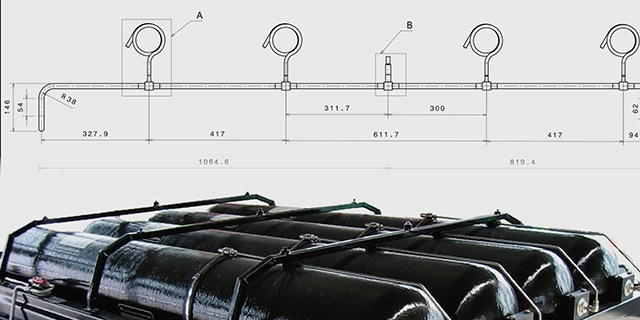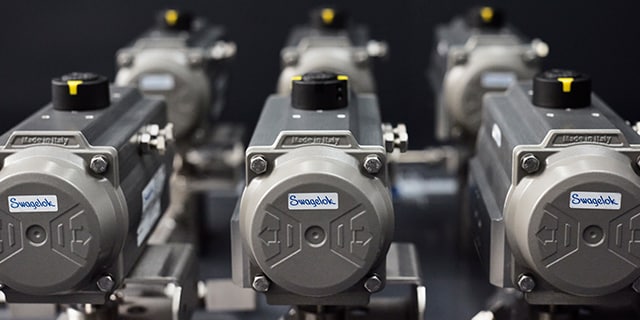Myth Busting: The Hydrogen Vehicle and Fueling Economy

Myth Busting: The Hydrogen Vehicle and Refueling Economy

There is no doubt that the economy for hydrogen fuel cell vehicles and fueling is growing. But as the technology gains more prominence, misinformation can become common. For hydrogen, these misperceptions typically revolve around its safety, viability as a mobility fuel, cost, and environmental impact.
Hydrogen has the potential to meet modern vehicle fueling needs, providing safety, reliability, cost-effectiveness, and environmental-friendliness. And, hydrogen could very well be the right, best path forward for the global economy as the world focuses on achieving a greener and more sustainable future for the planet.
Hydrogen Facts at-a-Glance
Check out an infographic version of this article for a downloadable visual that is easily shared to dispel hydrogen myths.
Here are four common myths about hydrogen worth reconsidering, as well as related facts about hydrogen's viability as a fuel source.
Jump to:
 Myth: Hydrogen Gas is Hazardous to Use or Store
Myth: Hydrogen Gas is Hazardous to Use or Store
Hydrogen presents the same, if not fewer, hazards than other fuels due to its nontoxic and low-volatility characteristics. Additionally, numerous safety procedures and protocols are considered throughout each design stage of both hydrogen vehicles and hydrogen refueling infrastructure to enable safe and reliable performance. And when handled properly, hydrogen fueling technology provides an efficient and economical solution for modern mobility needs.
Fact: Hydrogen is 14 times lighter than air and 57 times lighter than gasoline vapor. It will typically rise and disperse rapidly when leaked, greatly reducing the risk of ignition at ground level.
Relative Vapor Density

Fact: Hydrogen is nontoxic, unlike conventional fuels. A hydrogen leak or spill will not contaminate the environment or threaten the health of humans or wildlife, as fossil fuels can.
Fact: The air around the flame of hydrogen is not as hot as around a gasoline flame. Therefore, the risk of a secondary fire is lower.
Fact: While hydrogen can be explosive with oxygen concentrations between 18% and 59%, gasoline can be explosive at oxygen concentrations between 1% and 3%. Meanwhile, gasoline has an autoignition temperature of 536°F (280°C), which is half that of H2 (995°F/535°C).
Autoignition Temperatures

Fact: Vehicles with pressurized gas storage tanks are not new. There is an existing global multibillion-dollar industry that has been making and transporting hydrogen for many decades.
Fact: Hydrogen fueling dispensers are designed to run multiple safety checks in both the dispensing equipment and the vehicle during the fueling process (start, midpoint, end).
Fact: There are multiple international certification programs that review hydrogen's safety as a mobility fuel. For example, Toyota has received approval from Japan’s Ministry of Economy, Trade, and Industry (METI) to self-inspect and manufacture hydrogen tanks for FCEVs.
Fact: Country-specific hydrogen fueling station codes have been developed in 22 countries and include CSA (Canadian Standards), ISO (International Organization for Standardization), and EN (European Standards).
 Myth: Hydrogen Vehicles are Not a Practical Long-Range Solution
Myth: Hydrogen Vehicles are Not a Practical Long-Range Solution
Range is a common concern for any budding transportation fueling technology—but it shouldn’t be for hydrogen.
Because it maintains high energy density and it is particularly well-suited to heavy-duty vehicle applications, hydrogen's lighter weight can also help to maximize a heavy-duty truck’s payload volume, thereby increasing its range. Plus, high-speed refueling of hydrogen-powered vehicles is also possible, which helps to reduce the downtimes of vehicle fleets and equipment, fueling vehicles in minutes as opposed to hours for battery electric options. And while green hydrogen generation depends on wind, solar, and water—improved storage technologies can keep the clean energy flowing, regardless of the weather.

Hydrogen Fuel Cell Vehicle
Range: 200 to 250 Miles with 350 bar
400 to 500 Miles with 700 bar
Time to Refuel: 3 to 4 Minutes

Electric Vehicle
Range: 100 to 310 Miles

Gasoline Vehicle
Range: 300 to 400 Miles
Time to Refuel: 2 to 3 Minutes
Fact: Hydrogen has high energy density and therefore can deliver a comparable range to carbon-based fuels. Under pressure, it can also be stored and distributed as efficiently as these fuels.
Fact: While it is the most abundant element in the universe, hydrogen needs to be extracted from water or organic compounds. Diesel and gasoline also requires refining and cleaning of crude oil, however—and this process can also use hydrogen.
Fact:The major source of hydrogen today is extraction from natural gas (which is already a multibillion-dollar global industry).
Fact: Other hydrogen sources include renewables like solar, wind, or biogas. These energy sources power electrolysis, a process which uses electricity to separate water into useful hydrogen and oxygen.
Fact: Hydrogen refueling equipment can be added to existing fueling infrastructure and deliver comparable refueling times to gasoline and diesel.

 Myth: Hydrogen is Too Expensive
Myth: Hydrogen is Too Expensive
While conventional fuel remains cheaper today, the price of green hydrogen continues to fall. This price reduction is projected to accelerate over the next decade, making hydrogen truly comparable in price to other mobility fuel sources. Meanwhile, it is expected that government support will accelerate the growth of hydrogen at scale as CO2 emissions standards become stricter. Additionally, the cost and efficiency of renewable (solar, wind, water, etc.) energy resources continue to improve; it is anticipated this trend will extend to hydrogen fuel costs.
Total Cost of Ownership/USD per 100km
Fact: Major government initiatives, like the U.S. Department of Energy’s (DOE’s) Earthshots program, are intended to spur development and bring down hydrogen costs.
Fact: High-quality fuel system components reduce the occurrence and cost of unexpected maintenance.
 Myth: Hydrogen is Not Environmentally Friendly or Sustainable
Myth: Hydrogen is Not Environmentally Friendly or Sustainable
A common concern around hydrogen’s sustainability involves its production. But there are several ways to generate hydrogen, and most of them are more environmentally friendly than comparable fossil fuels. Plus, hydrogen use in a fuel cell creates no vehicle emissions except water—which will help to dramatically slash greenhouse gas generation globally.
Fact: Using hydrogen in a fuel cell creates no smoke or waste, and the only outputs are energy and pure water.
Fact: There are several processes by which hydrogen is produced, and most of these processes have reduced CO2 emissions.
Grey Hydrogen
Blue Hydrogen
Green Hydrogen
CO2 (ultimate goal)
Fact: Carbon capture technology offers a way to sequester carbon and permanently store it (or use it) for industrial purposes.
Fact: Government efforts, such as the DOE's Earthshots program, are anticipated to support and promote long-term growth.

If you’re looking for components, services, and training for developing high-quality hydrogen systems, we can help. Swagelok has been providing solutions for the alternative fuel and transportation industry for many years, with products and assemblies designed specifically to help contain, store, and dispense hydrogen for mobility. Our specialists are ready to assist with your needs.
Related Articles

The Anatomy of a Hydrogen Fitting
Learn why fittings designed specifically for hydrogen applications can help fuel cell vehicle OEMs and infrastructure developers achieve safer and more reliable fuel systems.

Luxfer Hydrogen Fuel Cell Case Study
Swagelok’s spirit of collaboration and willingness to invest in an EC-79 certification enabled Luxfer to create fuel delivery systems to power 144 hydrogen fuel cell buses. Learn how Swagelok Manchester’s level of commitment drove innovation for Luxfer.

Building Mission-Critical Hydrogen Compressors
Learn why one pioneering hydrogen compressors manufacturer relies on Swagelok for high-quality fluid system solutions to propel the burgeoning hydrogen mobility marketplace.






